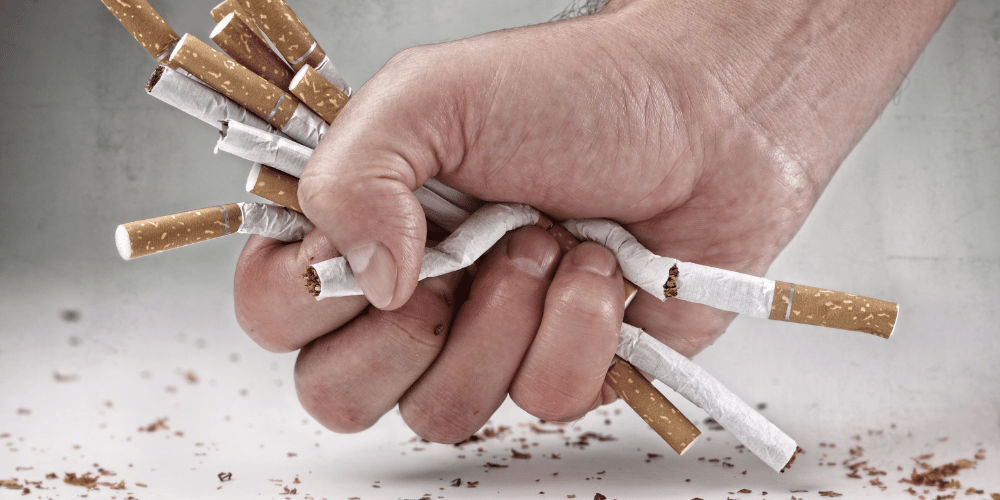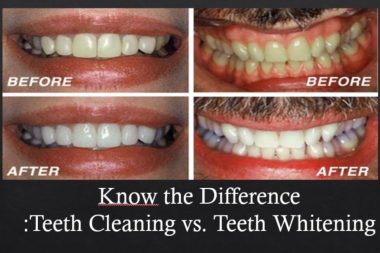Quitting smoking is one of the best decisions you can make for your health, as it comes with a host of benefits. But for many men, smoking cessation also has a positive effect on erectile dysfunction (ED), which is a condition characterized by difficulty achieving or maintaining an erection. So how long does it take after quitting smoking before these changes start to show? In this article, we’ll explore the link between smoking and ED, and the timeline for improvements in ED after quitting smoking.
How long after quitting smoking does erectile dysfunction improve?
It is not uncommon for men who smoke to experience erectile dysfunction. In fact, smoking is one of the leading causes of ED. But, quitting smoking can improve your sexual health in a number of ways and may even help to reverse ED.
So, how long after quitting smoking does erectile dysfunction improve?
The answer isn’t always clear cut as each person’s experience will be unique. However, there are some general patterns that tend to emerge.
In most cases, men will start to notice an improvement in their erections within a few weeks of quitting smoking. For some men, this improvement may be significant and they may be able to achieve erections that are just as good as (or even better than) those they had before they started smoking.
For other men, the improvements may be more gradual and it may take several months (or even longer) before they notice a real difference in their ability to get and maintain an erection.
Regardless of how long it takes for your erections to improve after you quit smoking, one thing is certain:Quitting smoking is one of the best things you can do for your sexual health!

The different types of erectile dysfunction
Erectile dysfunction (ED) is a man’s inability to get or maintain an erection. It can be caused by physical problems, psychological issues, or a combination of both.
There are three main types of ED:
1. Primary ED
This is when a man has never been able to get or maintain an erection. It may be due to an underlying health condition, such as diabetes or heart disease. It can also be the result of taking certain medications, such as antidepressants.
2. Secondary ED
This is when a man has had erections in the past but is now unable to get or maintain one. It may be due to psychological issues, such as stress or anxiety. It can also be the result of physical problems, such as diabetes or nerve damage from prostate surgery.
3. Situational ED
This is when a man is only unable to get or maintain an erection in certain situations. For example, he may be able to get an erection when masturbating but not during sex with a partner. It may be due to psychological issues, such as performance anxiety or depression.
The causes of erectile dysfunction
Erectile dysfunction (ED) is a common condition that can be caused by a variety of factors. These include physical problems like diabetes, heart disease, and obesity; psychological problems like anxiety and depression; and lifestyle choices like smoking, drinking too much alcohol, and not getting enough exercise.
In many cases, ED is caused by a combination of these factors. For example, a man who is overweight may have ED because of the extra strain on his heart. Or a man who smokes may have ED because of the damage to the blood vessels in his penis.
Fortunately, there are things you can do to improve your erections. If you’re overweight, losing weight will help. If you smoke, quitting smoking will help. And if you have any other health conditions that are causing ED, treating those conditions will also help.
The treatments for erectile dysfunction
Erectile dysfunction (ED) is a common problem for men. It can be caused by a number of things, including smoking. Quitting smoking can improve ED, but it may take some time.
There are a number of treatments for ED. These include:
– Prescription medications: There are several prescription medications that can be used to treat ED. These include Viagra, Cialis, and Levitra.
– Hormone therapy: Hormone therapy can be used to treat ED caused by low levels of testosterone.
– Vacuum devices: A vacuum device can be used to create an erection. The device consists of a cylinder that is placed over the penis and a pump that is used to create the vacuum.
– Surgery: In some cases, surgery may be necessary to treat ED. This includes penile implants or vascular surgery.
The best way to quit smoking
If you’re a man who smokes, you might be wondering how quitting smoking will affect your sexual health. Specifically, you may be wondering if quitting smoking will improve your erectile dysfunction (ED).
The good news is that quitting smoking can indeed improve your ED. In fact, research has shown that men who quit smoking have a significantly lower risk of developing ED than those who continue to smoke.
So, if you’re looking to improve your sexual health and reduce your risk of ED, quitting smoking is one of the best things you can do.
The effects of smoking on erectile dysfunction
Smoking is one of the leading causes of erectile dysfunction (ED). ED is the inability to get or keep an erection. Smoking damages blood vessels, which makes it difficult for blood to flow to the penis. This can lead to ED.
The good news is that ED is often reversible. Quitting smoking can improve your sexual health and function. It may take a few weeks or months for your ED to improve after you quit smoking. But if you stick with it, you will likely see a significant improvement in your ED symptoms.
How long after quitting smoking does erectile dysfunction improve?
Erectile dysfunction (ED) is a common problem for men who smoke cigarettes. The good news is that quitting smoking can improve ED. In fact, studies have shown that after just one year of abstinence from smoking, men who previously had ED saw a significant improvement in their ability to get and maintain an erection.
So, if you’re a man who smokes and you’re concerned about your sexual health, quitting smoking is one of the best things you can do. Not only will it improve your ED, but it will also lower your risk of other health problems, such as heart disease and cancer.
The benefits of quitting smoking
Erectile dysfunction is a common problem that affects men of all ages, but it is especially common in older men. It can be caused by a variety of things, including smoking.
Smoking is a major risk factor for erectile dysfunction. In fact, studies have shown that smokers are up to three times more likely to experience erectile dysfunction than nonsmokers.
Quitting smoking can have a number of benefits, including improving your erections. In one study, men who quit smoking saw an improvement in their erections within just two weeks. And the benefits continued to increase over time.
So if you’re struggling with erectile dysfunction, quitting smoking may be one of the best things you can do for your health—and your sex life.

How to quit smoking
If you’re a smoker, you know that quitting smoking is one of the best things you can do for your health. But did you know that quitting smoking can also improve your erectile dysfunction (ED)?
It’s true! Studies have shown that men who quit smoking have better sexual function than those who continue to smoke. In fact, one study found that men who quit smoking had a 65% improvement in their ED symptoms!
So how long does it take for ED to improve after quitting smoking? The answer is different for everyone, but most men will see an improvement within a few months of quitting. So if you’re ready to quit smoking and improve your ED, there’s no time like the present!
Conclusion
Quitting smoking can have a positive effect on erectile dysfunction, although the results vary from person to person. Generally speaking, most men who quit smoking experience some form of improvements in their ED symptoms within one month of quitting. However, it is important to remember that everyone’s body responds differently and that full recovery may take up to two years or even longer. Taking good care of your health by getting enough rest and exercise will help speed up the recovery process and improve overall quality of life.










Leave a Reply